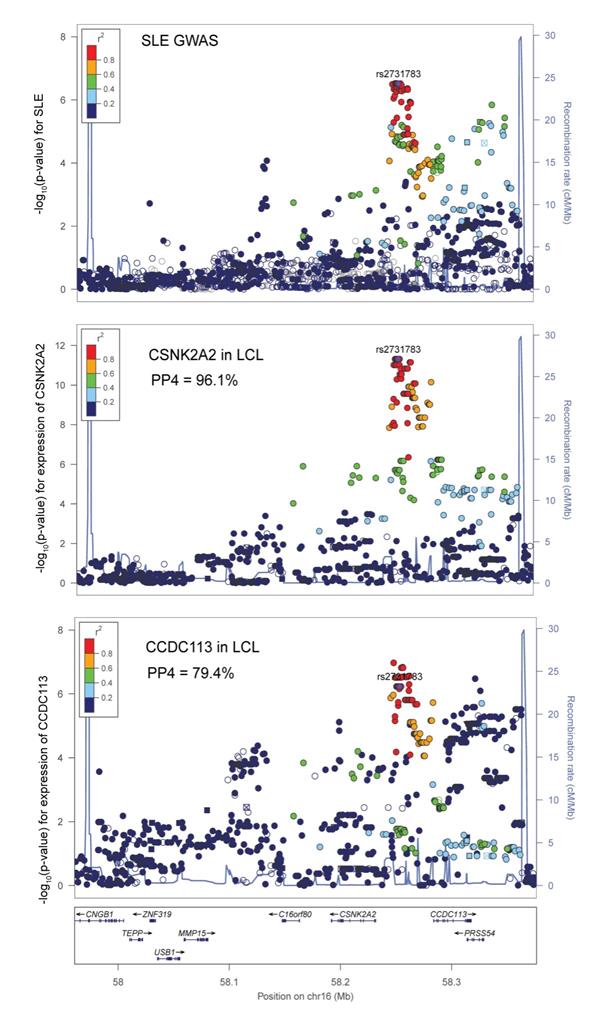属于GWAS下游比较时髦的一个分析,就是用来结合某个region的GWAS和eQTL数据来找最causal的eQTL。
核心指标:shared causal effect (PP4)
案例
方法
We further used a Bayesian method25 to test for colocalisation between SLE GWAS and eQTL signals (see the Methods section).【整体的目的和方法】
The results showed a high posterior probability for a shared causal effect (PP4=96.1%) between SLE association and CSNK2A2 expression in LCLs (see online supplementary figure S1), suggesting that the signals for SLE GWAS and eQTL were likely driven by the same causal variant.【核心指标PP4,注意这里的专业描述】
Compared with CSNK2A2 expression in LCLs, we observed a lower posterior probability for a shared causal effect (PP4=79.4%) between SLE association and CCDC113 expression (see online supplementary figure S1).【两个causal,如何二选一】
The expression level of CCDC113 was also significantly lower than that of CSNK2A2 (paired t-test p<2.2E-16, figure 1E) in LCLs.
Taken together, these results suggest that the putative causal variants may regulate expression of CSNK2A2 through affecting enhancer activities in B lymphocytes. 【结论】
一图胜千言,看下图。
在这个0.3Mb的区域内,SLE GWAS有很多signal,同时对其中的某些基因,eQTL也有很多signal,我们想知道哪个才是真正的具有causal effect的variant。

Figure S1 SLE association and eQTL association plots at the CSNK2A2 locus.
The x-axis shows the physical position on the chromosome (Mb).
(A) -log10(P) association p-value for SLE. (B) -log10(P) association p-value for CSNK2A2 expression in LCLs. (C) -log10(P) association p-value for CCDC113 expression in LCLs.
方法
参考:
colocalisation | GWAS and eQTL signals
原文:https://www.cnblogs.com/leezx/p/14446462.html